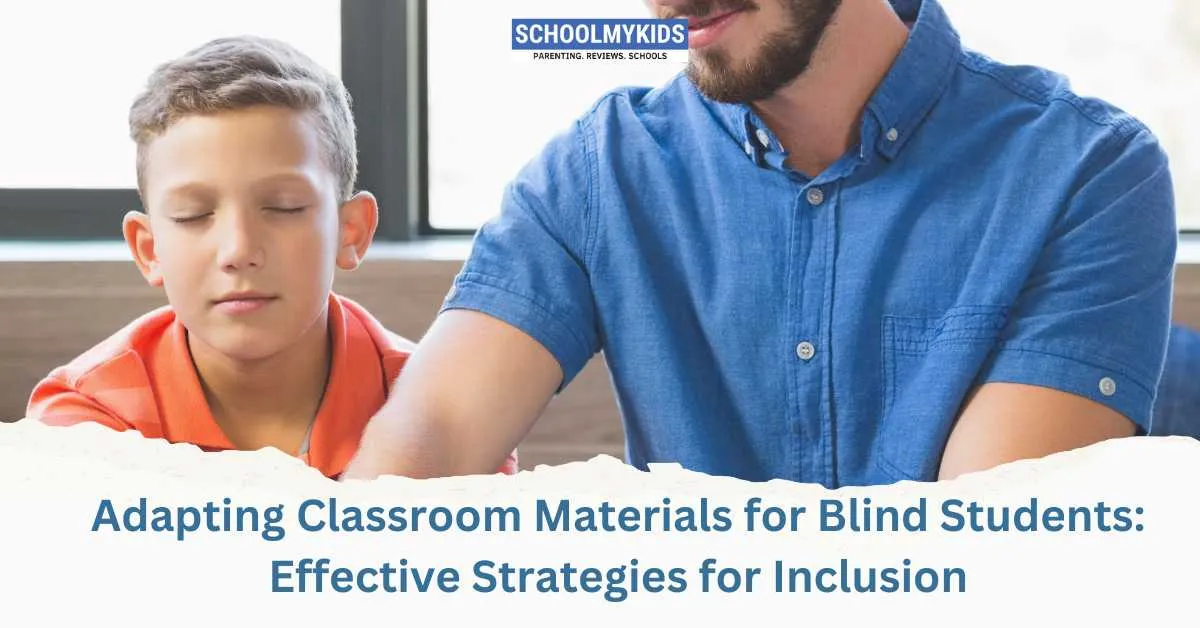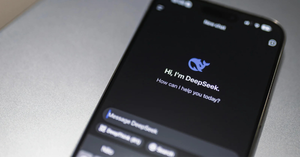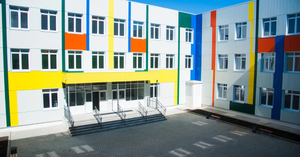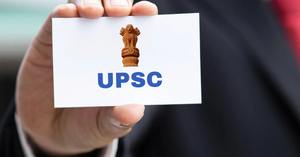Adapting classroom materials for blind students is essential in providing an inclusive education. It ensures that students with visual impairments can fully participate in academic activities and benefit from the same opportunities as their sighted peers. Teachers must use a variety of strategies and resources to make content accessible, enabling blind students to engage meaningfully in lessons. This article explores how classroom materials can be adapted to meet the needs of blind students, enhancing their learning experience and promoting academic success.
1. Understanding the Needs of Blind Students
Blind students, depending on the extent of their visual impairment, may rely heavily on their other senses—primarily touch and hearing—to access information. While some blind students are Braille readers, others may use audio resources or technology to assist in learning. Therefore, a one-size-fits-all approach to classroom materials will not be effective. Teachers must be aware of each student’s needs and tailor the materials accordingly.
2. Braille: A Key Tool for Learning
For blind students who are proficient in Braille, it becomes a vital tool for reading and writing. Adapting classroom materials into Braille ensures that blind students have equal access to written content. Here are ways teachers can incorporate Braille into their classroom:
- Textbooks and Worksheets in Braille: Teachers can request that textbooks and other instructional materials be converted to Braille. Many publishing companies provide Braille versions of textbooks, or there are services that specialize in Braille production.
- Braille Labels and Signs: Labeling classroom materials, such as bookshelves, storage areas, and equipment, in Braille allows students to navigate their environment independently.
- Handouts and Assignments: Teachers should provide handouts, homework assignments, and quizzes in Braille to ensure that blind students can complete tasks independently.
- Braille Note-takers: Specialized devices allow blind students to take notes in Braille, which can be reviewed later. These devices can also be connected to speech output systems, enabling the student to hear what they’ve written.
3. Tactile Materials for Exploration and Understanding
Beyond Braille, tactile materials play a crucial role in helping blind students understand concepts that would otherwise be visual in nature. Tactile learning materials offer a hands-on approach to education and can be used across subjects like mathematics, science, geography, and art. Some examples include:
- Tactile Graphs and Charts: In subjects such as mathematics and science, blind students can benefit from tactile graphs and charts that they can feel. These tools can represent data, such as bar graphs or pie charts, and help students better understand abstract concepts.
- 3D Models: Physical models allow students to feel shapes and structures. In subjects like biology or geometry, 3D models of the human body, geometric shapes, or architectural structures can provide students with a deeper understanding of the material.
- Raised-Line Drawings: Raised-line drawings can be used to explain maps, diagrams, or illustrations. Students can trace the outlines of countries, continents, or figures, helping them visualize the content in a tactile manner.
- Textured Materials: Textured materials, like sandpaper, fabric, or rubber, can be used to create representations of different surfaces, like mountains, rivers, or various textures in nature. These materials help blind students experience tactile exploration of the world.
4. Audio and Digital Resources
In the absence of visual cues, audio becomes a significant mode of instruction for blind students. Teachers can integrate the following audio resources into their classrooms:
- Audiobooks: Audiobooks are an essential resource for blind students, especially for subjects that require heavy reading. Many audiobooks are now available in accessible formats such as MP3 or digital downloads, which can be played on various devices.
- Recorded Lectures and Instructions: Teachers can record their lectures, instructions, and explanations so that blind students can access them at their convenience. This gives students time to review lessons and hear the material at their own pace.
- Screen Reader Technology: Screen readers like JAWS (Job Access With Speech) or NVDA (NonVisual Desktop Access) convert digital text on a screen into spoken words. These tools are invaluable for blind students using computers or tablets for reading assignments, writing essays, or completing online tests.
- Voice-controlled Assistants: Devices like Amazon’s Alexa or Google Assistant can be used to provide auditory support for blind students. Teachers can incorporate these voice-controlled devices to ask questions, play educational games, or retrieve information that the student might need.
5. Accessible Online Learning Platforms
With the increasing integration of technology into education, it’s crucial that online learning platforms are made accessible to blind students. This includes ensuring compatibility with screen readers and providing alternative formats for all digital content:
- Accessible Websites: Websites and online platforms should be designed with accessibility in mind, adhering to web accessibility guidelines (such as WCAG). This includes proper use of headings, alt text for images, and keyboard navigation.
- Audio or Video Content with Descriptions: For video content, teachers should provide audio descriptions, which describe visual elements in the video, ensuring that blind students can follow along with the content.
- Interactive Software: Interactive educational software should include auditory feedback and be navigable with keyboard commands or assistive devices. Teachers should ensure that the software being used is accessible to all students.
6. Using Technology for Math and Science
Math and science subjects often present significant challenges for blind students because they involve charts, graphs, equations, and diagrams. However, technology and specialized tools can make these subjects accessible:
- Talking Calculators: Talking calculators, which read out the numbers and operations, can assist blind students with performing calculations independently.
- Math in Braille: Mathematics can be challenging to represent in Braille, but tools like Braille math templates or specialized Braille embossers allow blind students to read and write math problems.
- Scientific Notation in Braille: Just as with math, scientific notation can be adapted into Braille, ensuring that blind students can engage with science content. Specialized tools like the Braille slate or embosser make this possible.
- Interactive STEM Tools: STEM (Science, Technology, Engineering, and Math) activities can be made more accessible through the use of hands-on kits and interactive tools. For instance, creating tactile models of the solar system or using sound-based experiments can help blind students explore science concepts.
7. Classroom Organization and Layout
Making the physical environment accessible to blind students is just as important as adapting materials. Teachers should consider the following strategies:
- Consistent Arrangement: Arrange the classroom in a predictable and consistent way so that blind students can easily navigate it. Keep desks, chairs, and other furniture in the same positions to avoid confusion.
- Clear Pathways: Ensure there are no obstacles in the classroom that could impede a blind student’s mobility. Marking edges of furniture or areas with tactile strips can help students orient themselves.
- Large Print and High Contrast: For students with low vision or partial sight, providing materials in large print or using high-contrast color schemes can be beneficial. Black text on a white background or white text on a black background can improve visibility.
8. Collaborating with Specialists
To make the most effective adaptations, teachers should collaborate with specialists who have experience working with blind students. These professionals can provide guidance on best practices, help with the selection of appropriate tools, and ensure that students are receiving the support they need. These specialists may include:
- Orientation and Mobility Instructors: These instructors can help blind students learn how to navigate the classroom and school environment safely.
- Special Education Teachers: Special education teachers with expertise in visual impairments can provide guidance on adapting materials and creating an individualized learning plan for blind students.
- Assistive Technology Specialists: These specialists can recommend and teach students how to use various technologies that facilitate learning, such as screen readers or audio recording devices.
9. Encouraging Peer Interaction and Collaboration
An important aspect of adapting materials for blind students is ensuring that they have the same opportunities for social interaction and collaboration as their sighted peers. Teachers should encourage group work and ensure that classmates are aware of how they can assist their blind peers. This can include:
- Peer Support: Pairing blind students with sighted peers who can assist with reading materials aloud, explaining visual elements, or simply providing companionship during classroom activities.
- Inclusive Group Work: Encouraging inclusive group activities helps foster understanding and cooperation among all students. It also promotes empathy and creates a more inclusive classroom culture.
10. Ongoing Evaluation and Adjustment
Lastly, it’s important for teachers to continually assess how well the adaptations are working for blind students. This involves:
- Regular Feedback: Teachers should seek regular feedback from blind students about the accessibility of materials and the effectiveness of the tools and strategies being used.
- Adapting to Changing Needs: As students progress through school, their needs may change. Teachers should be flexible and ready to adjust the adaptations to ensure continued success.
Conclusion
Adapting classroom materials for blind students is crucial for creating an inclusive and equitable learning environment. By utilizing Braille, tactile resources, audio technologies, and assistive devices, teachers can make learning accessible to blind students, ensuring they have the tools they need to succeed. Collaboration with specialists, ongoing assessment, and fostering a culture of inclusion are key components of an effective approach. With the right strategies, blind students can excel academically and socially, fully participating in the classroom alongside their peers.








Be the first one to comment on this story.